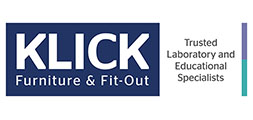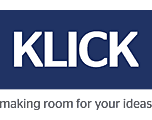24 Jan Early Use of Computers in Schools
Early Use of Computers in Schools
Klick has a long history with computing and schools.
It was no coincidence that the Klick marketing literature published in the early 1980s shows images of 3 specific micro computer models; the Sinclair ZX Spectrum, the BBC Micro and the Research Machines 380Z.
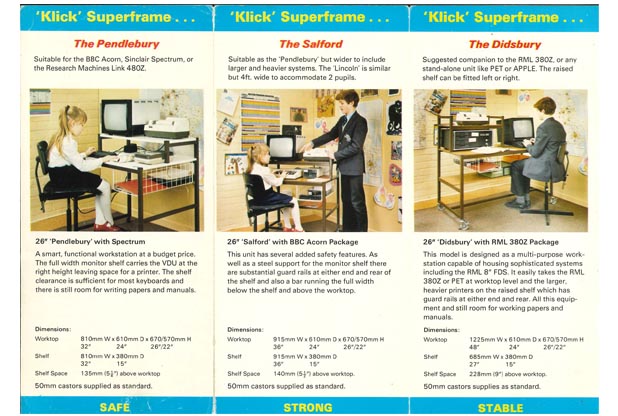
In 1982 the British government offered a subsidy to schools which allowed them to buy several models of computer for half the current price in order to increase the use of computers in schools.
The initiative was supported by the prime minister at the time, Margaret Thatcher, when she stated in a speech in 1981:-
“Our future prosperity depends in large part on the quality of education today. That quality requires not only that children should learn the familiar basic subjects but that they should also be able to understand computers and how they can be used and applied.”
The Micros in Schools scheme was launched, with funds of £15.1m in 1981 to 1982 to provide all secondary schools with half of the cost of a microcomputer.
The Department of Trade and Industry specified the following British made models could be purchased by schools in order to qualify for the scheme.
The BBC Micro
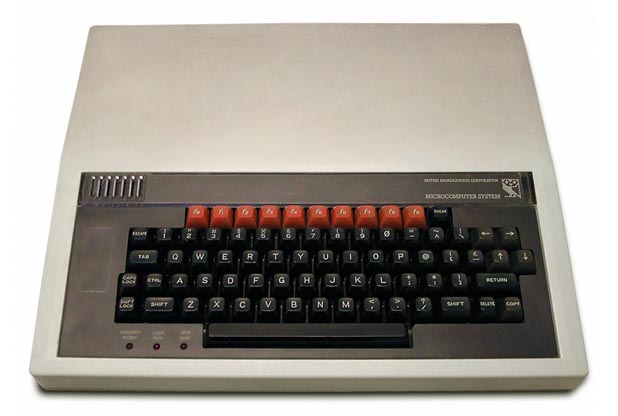
Image from Wikipedia
The BBC Micro had a rugged design, a good quality operating system and was known for its expandability.
In 1982 a television series was launched on BBC2 called The Computer Programme, which featured Chris Serle learning to use the machine.
There are still numbers of BBC Micros in use today and a community of dedicated retro computer users finding new tasks for the old hardware. They survive in a few interactive displays in museums and the UK National Museum of Computing at Bletchley Park uses BBC Micros as part of a scheme to educate school children about computer programming. Jodrell Bank observatory was reported to be using a BBC Micro to steer its 42 ft radio telescope in 2004.
Research Machines 380Z
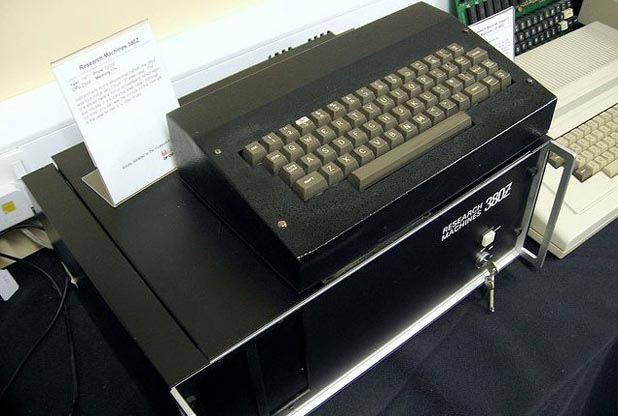
Image from The Register
This computer took the form of a big black rectangular metal case with two strong carrying handles on the front and was clearly intended to be slotted into scientific instrument racks. The company was established to build machines for research and originated in Oxford where the founders had contacts in various colleges’ physics departments. The keyboard was separate and came in a tough metal case.
The 380Z was sold mainly to educational institutions in the United Kingdom, in 1979 a dual 8-inch disk system with 56 KB of memory cost £3266, and a 16 KB cassette-based system cost £965 (excluding VAT). These systems became popular in schools and many local authorities favoured the RM models.
The Sinclair ZX Spectrum
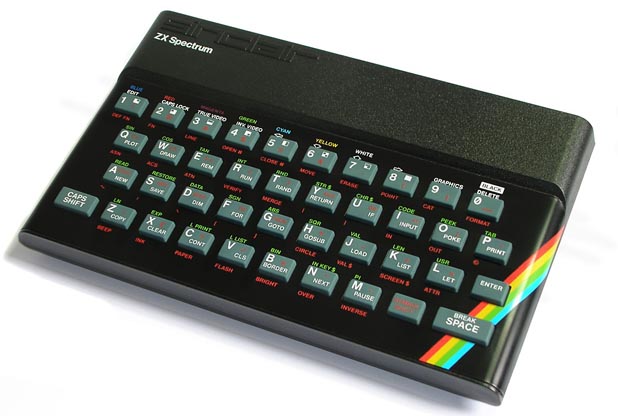
Image from Wikipedia
The Sinclair machine was cheaper than other models, so you got more for your money. It was excellent for home use but wasn’t robust enough for use in schools and was soon phased out in preference for other models.
What could you expect from School Computers in the Early 1980s?
PCs at that time were mostly used for business use, they had monochrome screens, often green and black, no sound and no graphics – other than the IBM set of lines which allowed business forms to be designed on screen. These early PCs were not ideal for use in schools and it was felt that young children needed something to help them learn which was more visually interesting.
The 3 micro computer models selected by the DTI for use in schools all had comparatively good graphics and sound. There were only 8 basic colours and a range of simple tones available but this allowed for a good range of animation and sound.
Programs were driven by menu choices made using the keyboard. The computers had no mouse to allow you to click or drag.
The Practicalities of Computer Use in Schools
It is hard to believe schools only had one computer but in the early 1980s they had the problem of storing their new computer and also moving it around to different classrooms. In addition to the computer, there would have been a disc drive, floppy discs and possibly a line printer and separate keyboard. It was a challenge to carry all this expensive equipment around and it needed to be locked away somewhere safe when not in use.
Len whitehurst was the original founder and MD of Klick and was already supplying schools with benching. He designed a trolley suitable for transporting all the necessary equipment around schools. The design, which was revolutionary in its day, was approved and an initial order for 350 trolleys from Hampshire Local Authority followed.
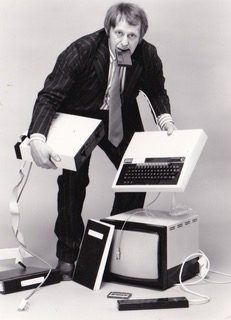

Len is pictured here in a publicity shot to launch the highly successful Klick computer trolley.
Software for School Computers
Initially the content focused on educational games with an emphasis on spelling or basic maths and computers came with a tape recorder and several boxes of cassette tapes. The activities were limited to basic rote learning and it was not until the mid 1980s with the introduction of computers such as the ‘Dart’ that computers were used in schools for open-ended learning allowing students to experiment with mathematical problems and other more creative applications.
Introduction of the Apple Macintosh
On 24th January 1984 the Apple Macintosh went on sale. It was the first successful mass-market desktop with a built-in screen and a mouse. It had a graphical user interface and came with MacWrite and MacPaint. There was a dramatic launch with a promotional video and keynote speech from Steve Jobs.
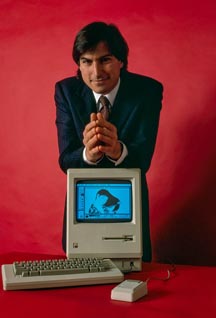
Read more about Steve Jobs the Apple Macintosh computer
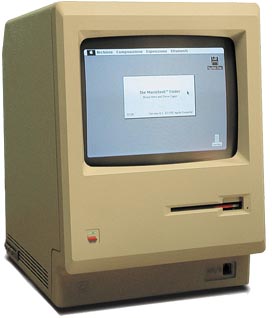
Image from Wikipedia
The Macintosh was easy to use and was immediately successful. As it was an American product it was not initially available to UK schools although a number of local authorities in Scotland did adopt it.
Apple remained strong in the graphical industries and eventually transformed the world of computers. The use of the iMac, iPods, iPads and the iPhone became established and devices such as tablets have changed the use of IT in education.
Computing in Schools Today
Today the ICT facilities in schools have advanced dramatically and computing is a subject that all young people need to learn in order for them to have a well-informed understanding of the increasingly digital world.
Old computers can be a useful resource as an educational tool and projects like The Code Show allow children to learn about the history of computers in a hands-on way by providing a timeline of home computers for use in their school.
If you would like to take advantage of Klick’s experience and expertise in designing computer rooms for schools our consultants would be happy to help. Please call 0161 9989726 or email us to discuss your plans.
Sources:-
Wikipedia – https://en.wikipedia.org/wiki/BBC_Micro
The History of Computers in English Schools – https://briansmithonline.com/computing/history-of-school-computers.html
Wikipedia – https://en.wikipedia.org/wiki/Research_Machines_380Z
Early Uses of Computers in Schools in the United Kingdom: Shaping Factors and Influencing Directions https://link.springer.com/chapter/10.1007/978-3-642-55119-2_9
Wikipedia – https://en.wikipedia.org/wiki/ZX_Spectrum
The Register – https://www.theregister.com/2013/11/13/archaeologic_the_research_machines_380z_story/
The Code Show – https://thecodeshow.info/
